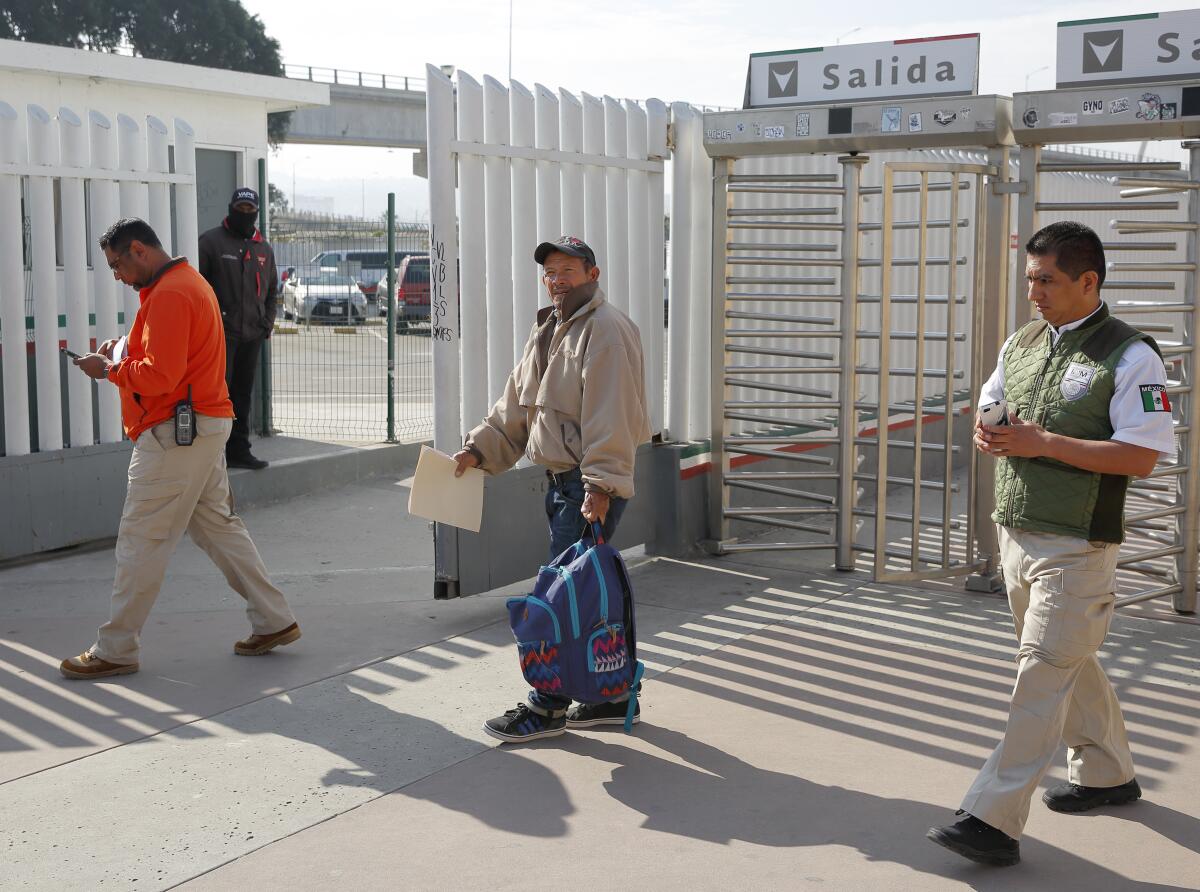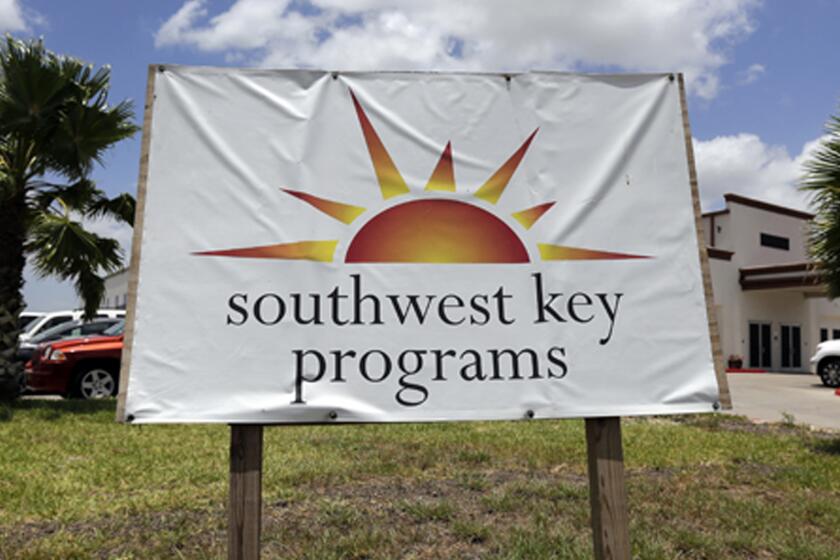What’s next for the ‘Remain in Mexico’ immigration policy?

The U.S. Supreme Court’s decision to order the reinstatement of the “Remain in Mexico” immigration policy is sparking criticism from advocacy groups and praise from former President Trump. It’s also prompting promises by the Biden administration to keep pushing back against a lower court’s decision to reactivate the policy, which forced people to stay in Mexico after applying for asylum in the United States.
The high court’s decision, which came late Tuesday, said the Biden administration’s attempt to end the Trump-era program, known as the Migrant Protection Protocols, was a likely violation of federal law. The ruling raised many questions, including whether a legal challenge would prevail and what the practical effects of reinstatement will be if it stands.
What’s next for the Biden administration?
The Department of Homeland Security said it is taking steps to comply with the high court’s decision while the Biden administration appeals.
The administration could try again to end the program by having the department provide a fuller explanation for its decision to do so.
White House spokeswoman Jen Psaki said Wednesday that the administration had appealed a District Court decision that the Supreme Court’s order sprang from and would continue to “vigorously challenge” it.
Trump, meanwhile, welcomed the court order and said the Biden administration must now reinstate “one of my most successful and important programs in securing the border.”
During Trump’s presidency, the policy required tens of thousands of migrants seeking asylum in the U.S. to turn back to Mexico. It was meant to discourage asylum seekers, but critics said it denied people the legal right to seek protection in the U.S. and forced them to wait in dangerous Mexican border cities.
U.S. immigration experts note that no matter what happens over the long term, the Biden administration has wide discretion on how to reimplement the policy if appeals are unsuccessful.
“It could reimplement it on a very small scale for families who meet certain criteria from very specific nationalities, or it could do something broader,” said Jessica Bolter, associate policy analyst at the Migration Policy Institute in Washington.
How is Mexico reacting?
Mexico’s Foreign Relations Department refused to say late Wednesday whether the government would allow the U.S. to reinstate the policy of sending asylum seekers back across the border to wait for hearings on asylum claims.
Roberto Velasco, Mexico’s director for North American affairs, said the court ruling is not binding on Mexico. He emphasized that Mexico’s “immigration policy is designed and executed in a sovereign manner.”
“The Mexican government will start technical discussions with the U.S. government to evaluate how to handle safe, orderly and regulated immigration on the border,” Velasco said.
Mexico is not legally obligated to receive returning migrants who are not Mexican citizens, and most of the asylum seekers are not.
During the Trump administration, the Mexican government said it was cooperating with the program for humanitarian reasons. Although migrants were granted humanitarian visas to stay in Mexico until they had their U.S. hearings, they often had to wait in dangerous areas controlled by cartels, leaving them vulnerable to being kidnapped, assaulted, raped or killed. Others were taken by bus to parts of southern Mexico or “invited” to return to their home countries.
Mexico technically could block the program by refusing to accept migrants asked to stay there under the Migrant Protection Protocols. But analysts including Tonatiuh Guillén, former head of Mexico’s migration agency, consider that unlikely given the country’s history of cooperation with the U.S.
Guillén said Mexican officials would probably go along even though the country doesn’t have sufficient resources to deal with a resurgence of asylum seekers at the border, and nonprofit shelters there are overwhelmed.
Still, more than 70 Mexican, U.S. and international NGOs have sent a letter asking President Andrés Manuel López Obrador not to accept the U.S. court decision.
“I don’t think either Mexico or the Biden administration want to reimplement [the “Remain in Mexico” program] at its maximum capacity right now,” Bolter said. “If it is reimplemented at a low level, it will have serious consequences for the families or other migrants who are subjected to it. But overall, I think it’s unlikely to drastically change the policy landscape at the border.”
How robust was the program in recent years?
Immigration specialists note that Migrant Protection Protocols already had been significantly scaled back during the pandemic as officials began using public health protocols to swiftly expel migrants.
The Trump administration placed roughly 6,000 migrants into the program from April 2020 to January 2021 — a fraction of the 71,000-plus who were placed into the program overall, Bolter said. The program was launched in January 2019.
“Clearly, it wasn’t operating at the level it had been operating before, but there definitely were still people being placed into it,” Bolter said. She added that the program was largely being used for migrants whom Mexico refused to take back under pandemic-era health protocols known as Title 42.
Victoria Neilson, managing attorney of the Catholic Legal Immigration Network’s defending vulnerable populations program, noted that since the pandemic far fewer migrants have been placed in the “Remain in Mexico” program as many were expelled from the border under the health protocols initiated by the Trump administration and continued under President Biden.
What about Title 42 expulsions?
The State Department is holding talks with the Mexican government as the administration reviews the Trump-era protocols to determine how they can be implemented while Title 42 is in effect, said a Homeland Security official who spoke on condition of anonymity to discuss internal deliberations.
The Centers for Disease Control and Prevention renewed the Title 42 public health powers early this month. The administration has emphasized that Title 42 is not an immigration authority but a public health authority, and its continued use is dictated by the CDC’s analysis of the public health situation.
While Title 42 expulsions continue, the U.S. for now has suspended processing into the U.S. those who were returned to Mexico under Migrant Protection Protocols during the Trump administration.
In recent weeks, the U.S. has flown Central American migrants expelled under Title 42 into Mexico’s south, sparking concerns by United Nations agencies about vulnerable migrants who they say need humanitarian protection.
The U.S. government has intermittently flown Mexicans deep into Mexico for years to discourage repeat attempts, but flights that began this month from Brownsville, Texas, to the Mexican state capitals of Villahermosa and Tapachula, near the Guatemalan border, appear to be the first time that the U.S. has flown Central Americans deep into Mexico.
Taxin reported from Orange County, California. Maria Verza in Mexico City and Ben Fox and Mark Sherman in Washington contributed to this report.
More to Read
Sign up for Essential California
The most important California stories and recommendations in your inbox every morning.
You may occasionally receive promotional content from the Los Angeles Times.






